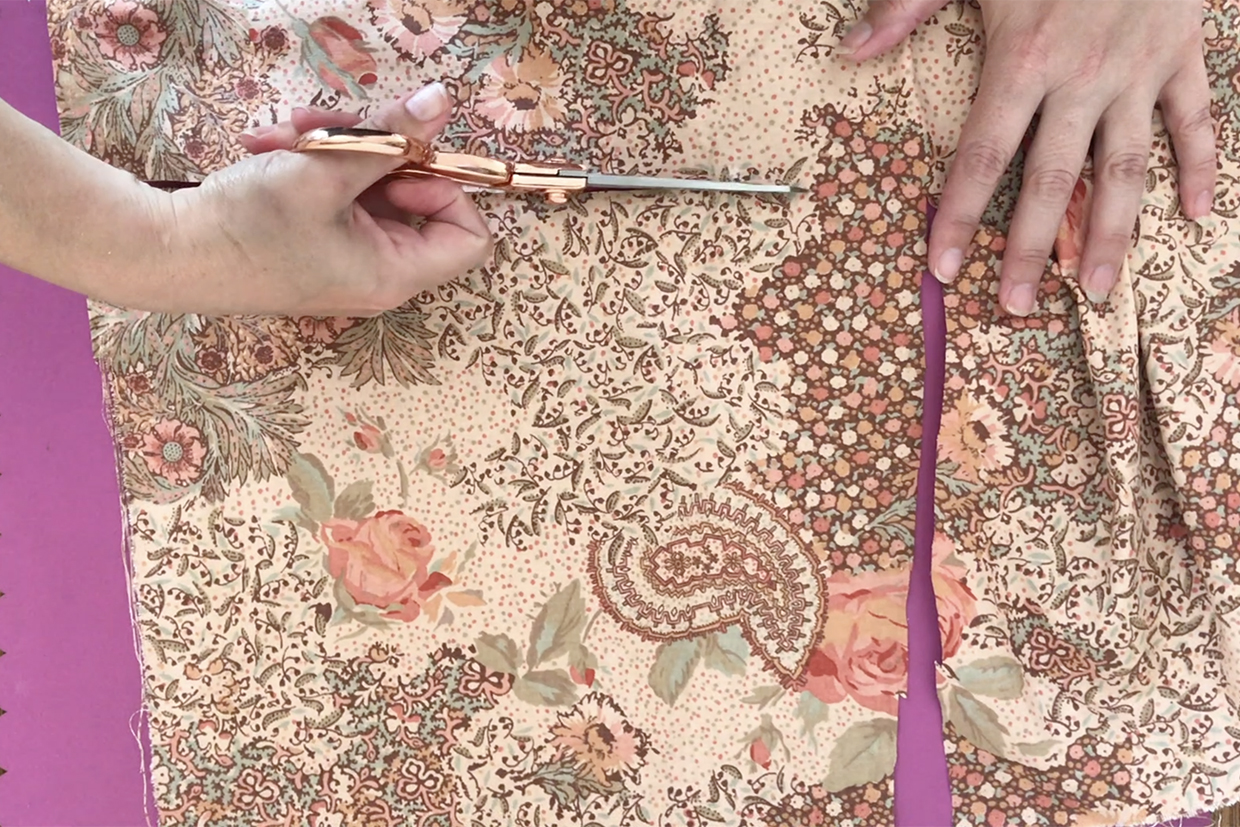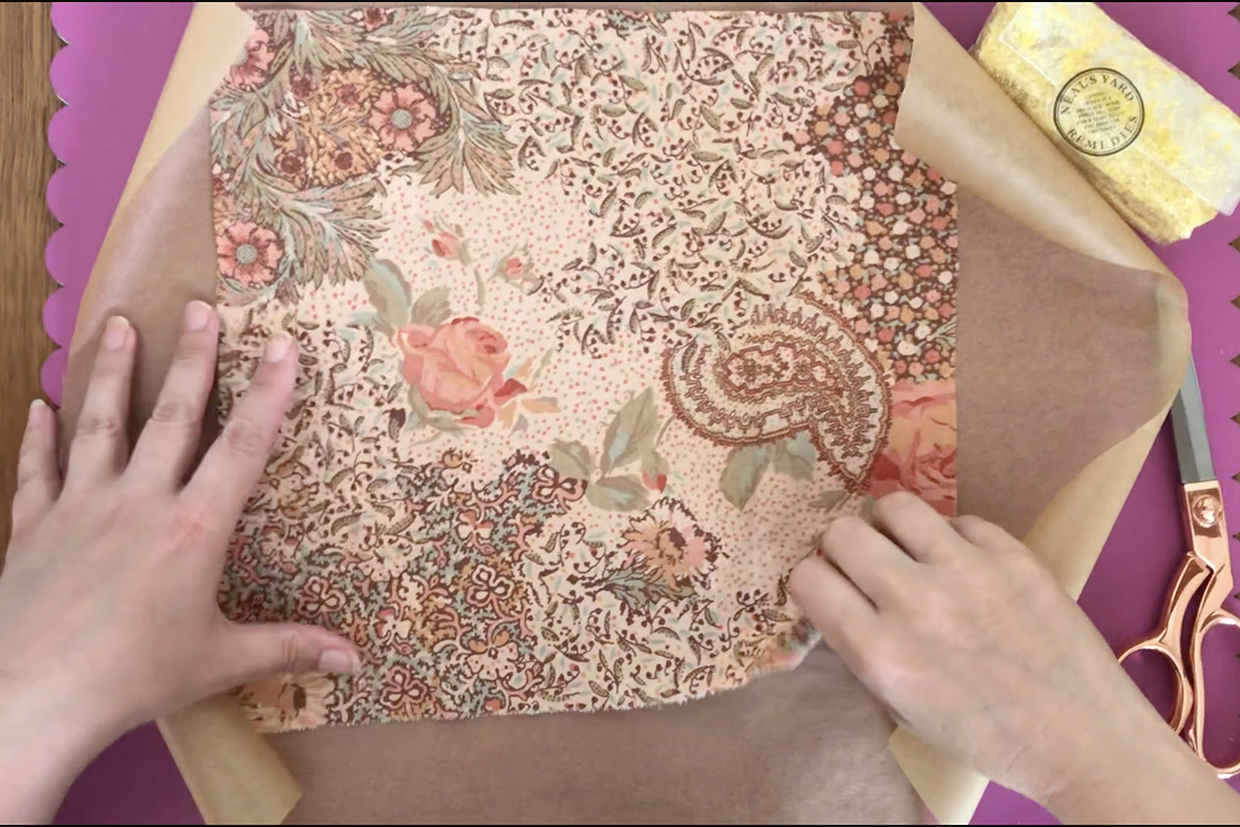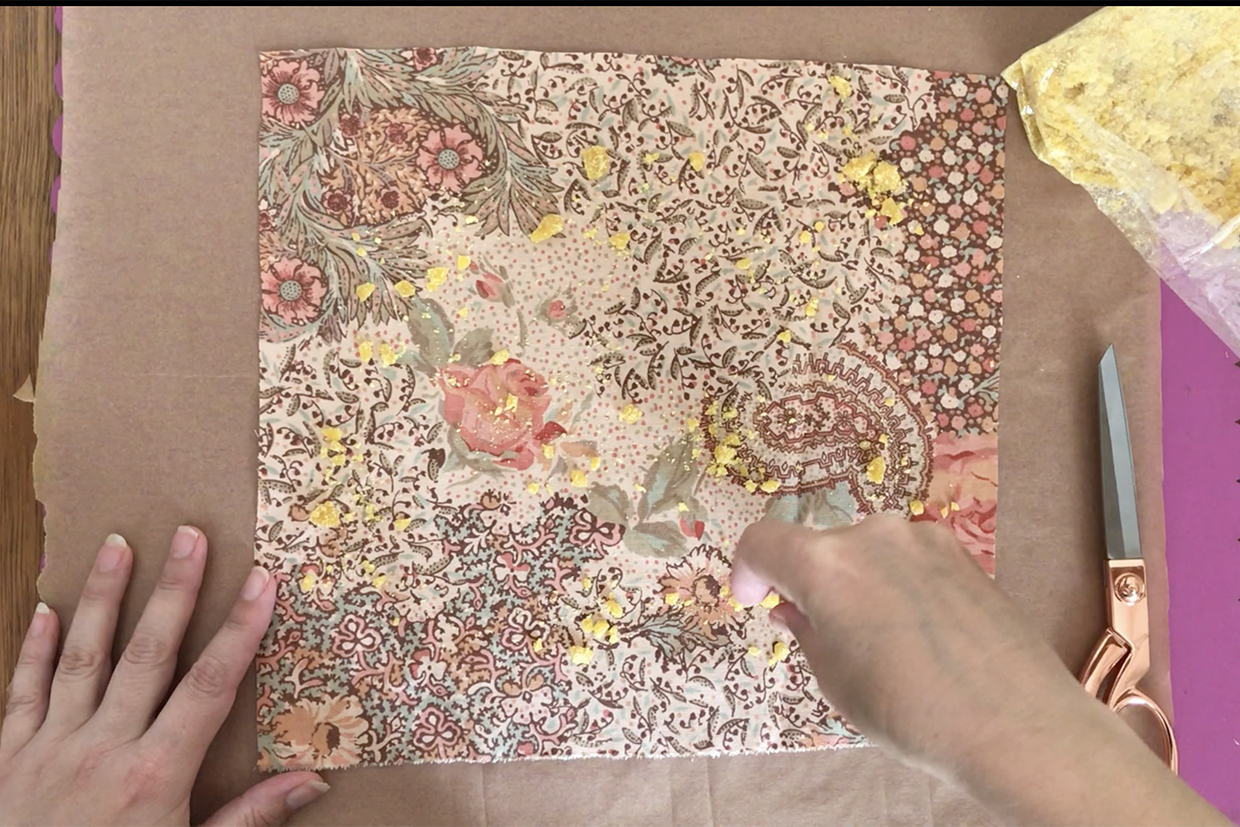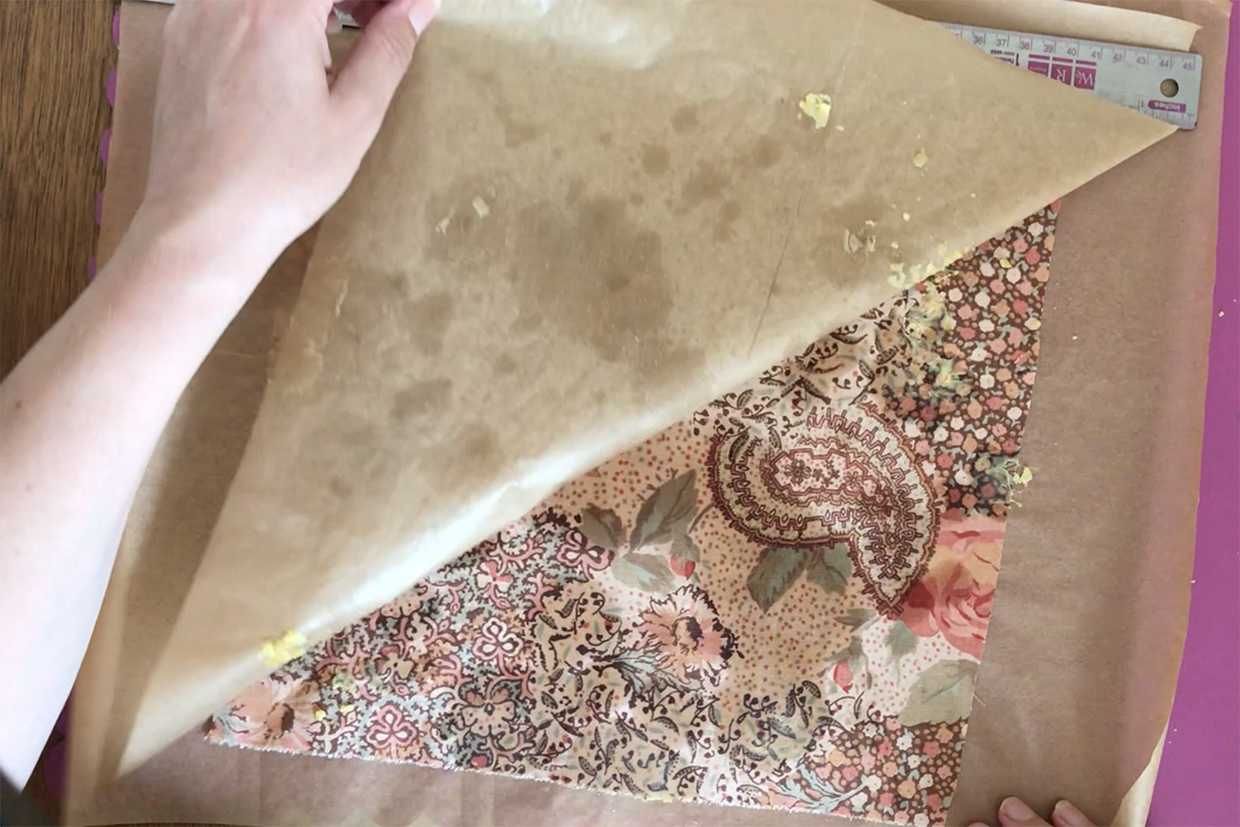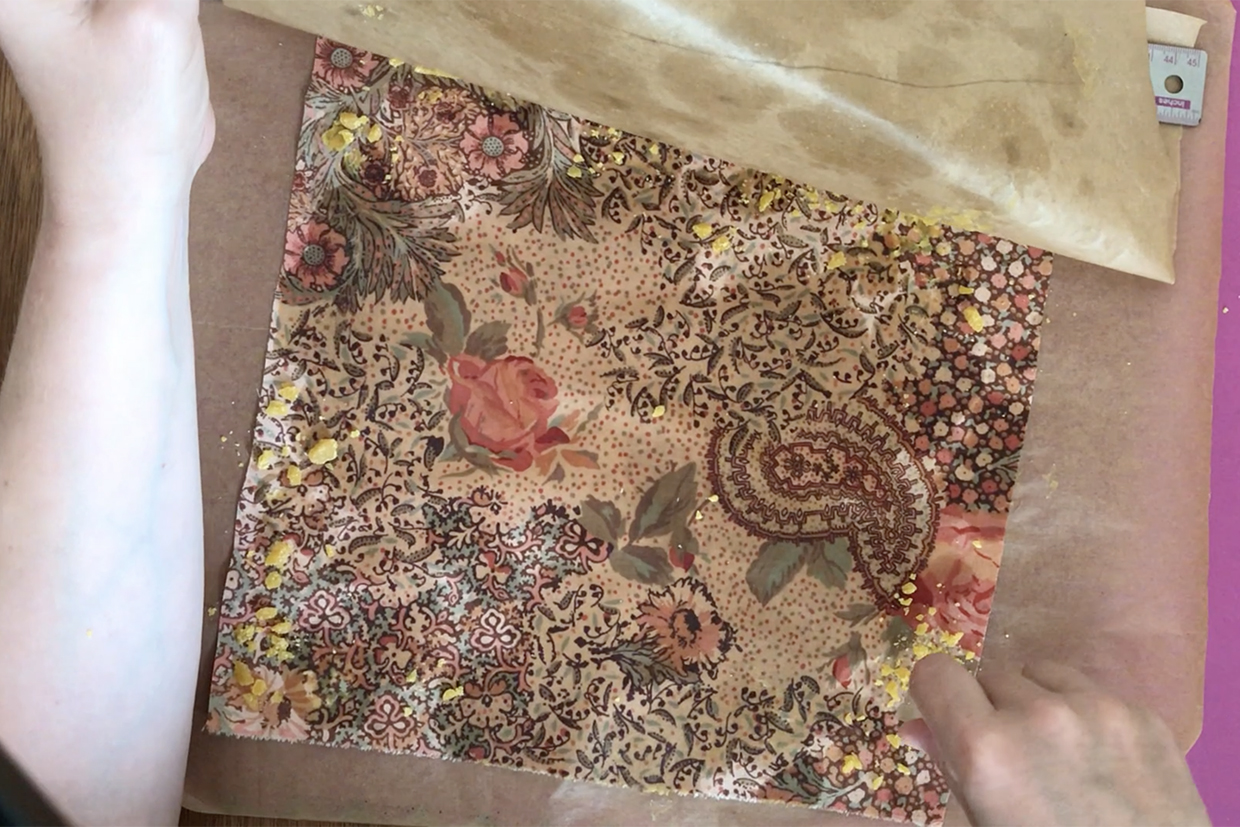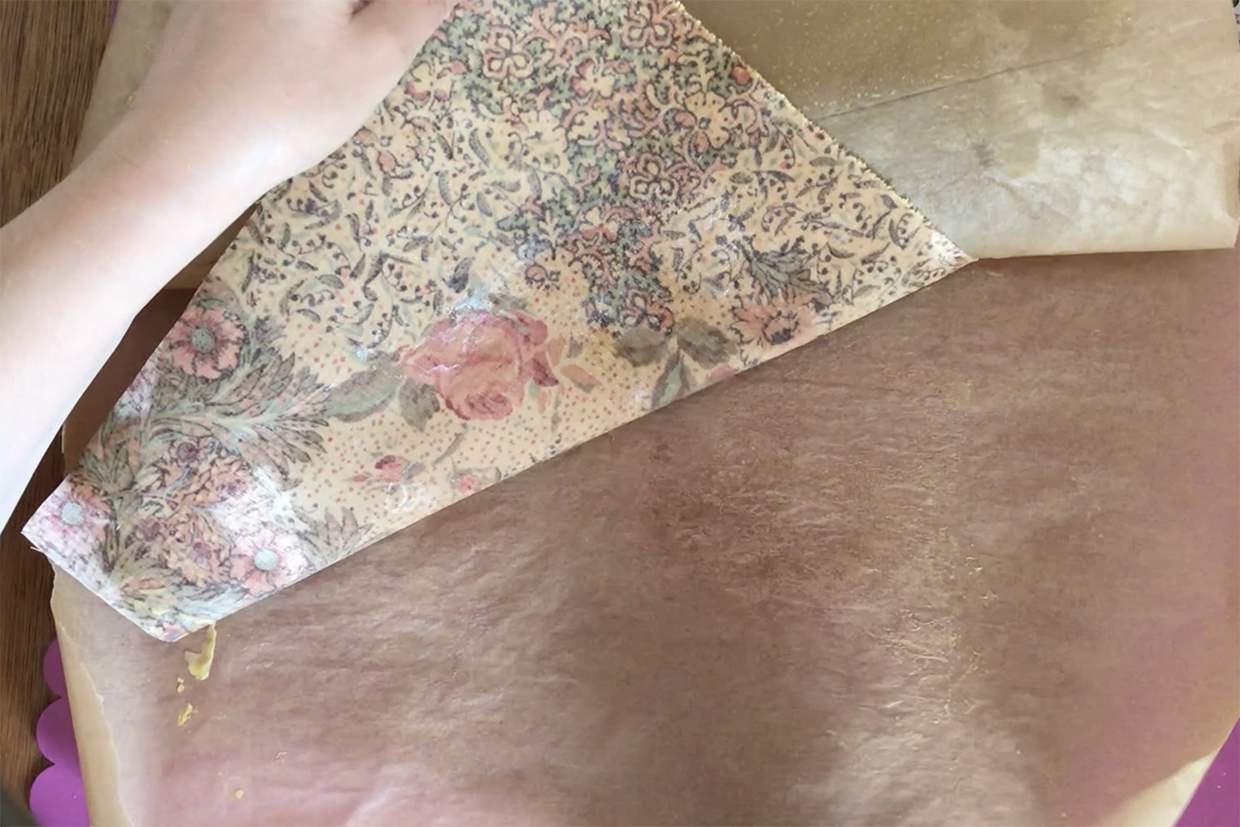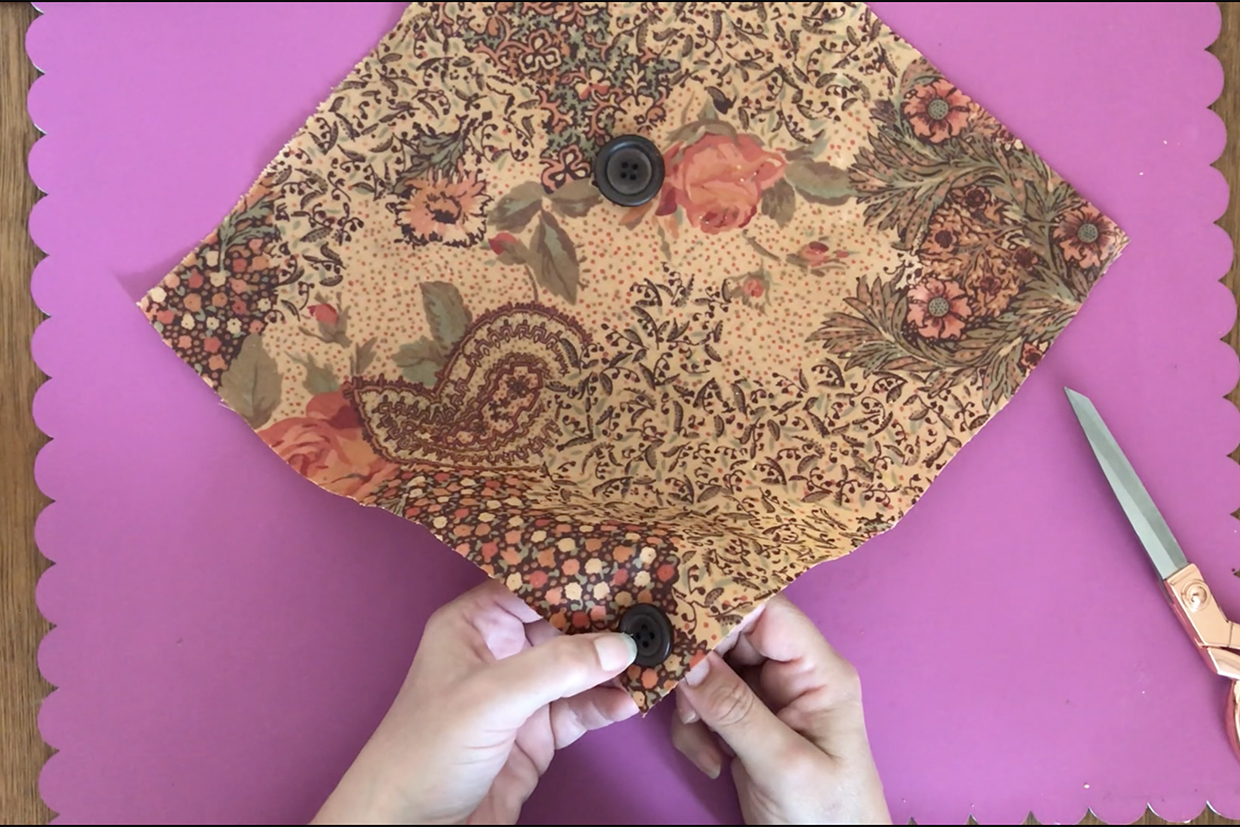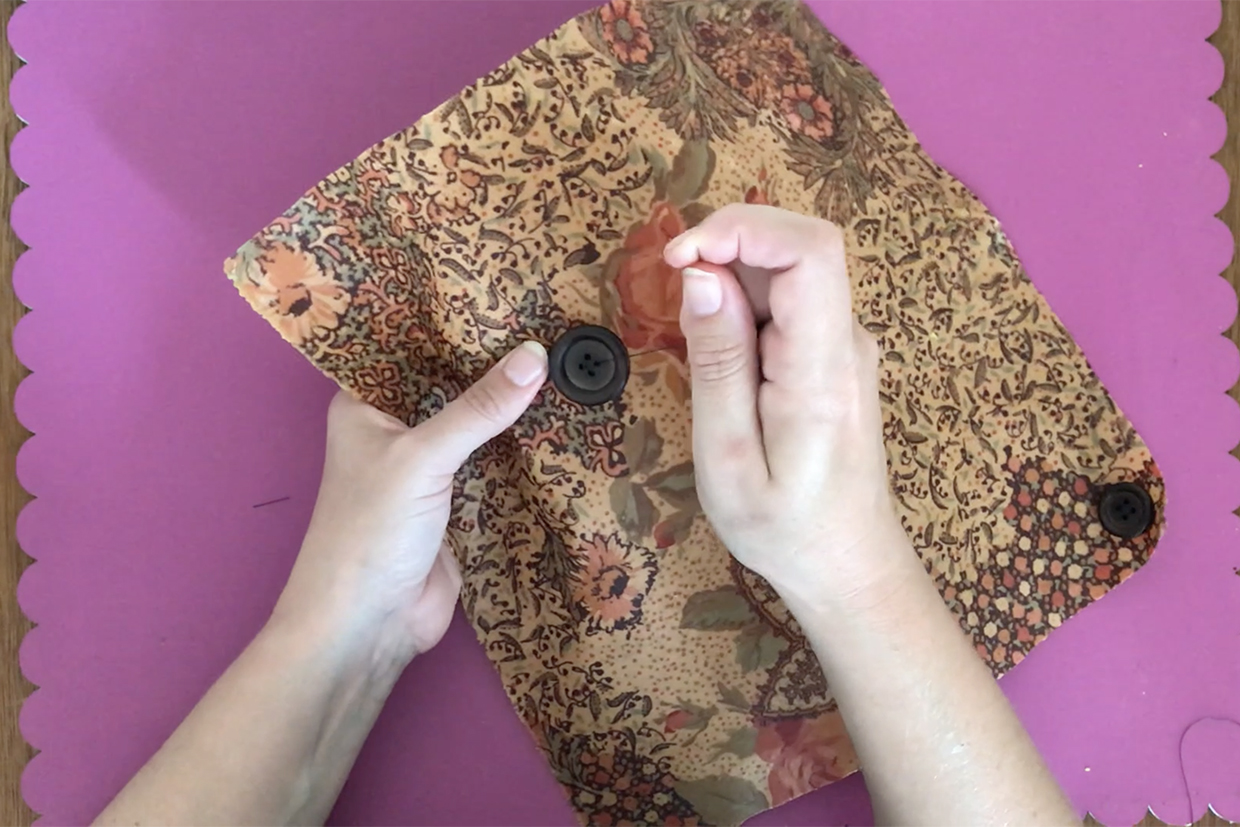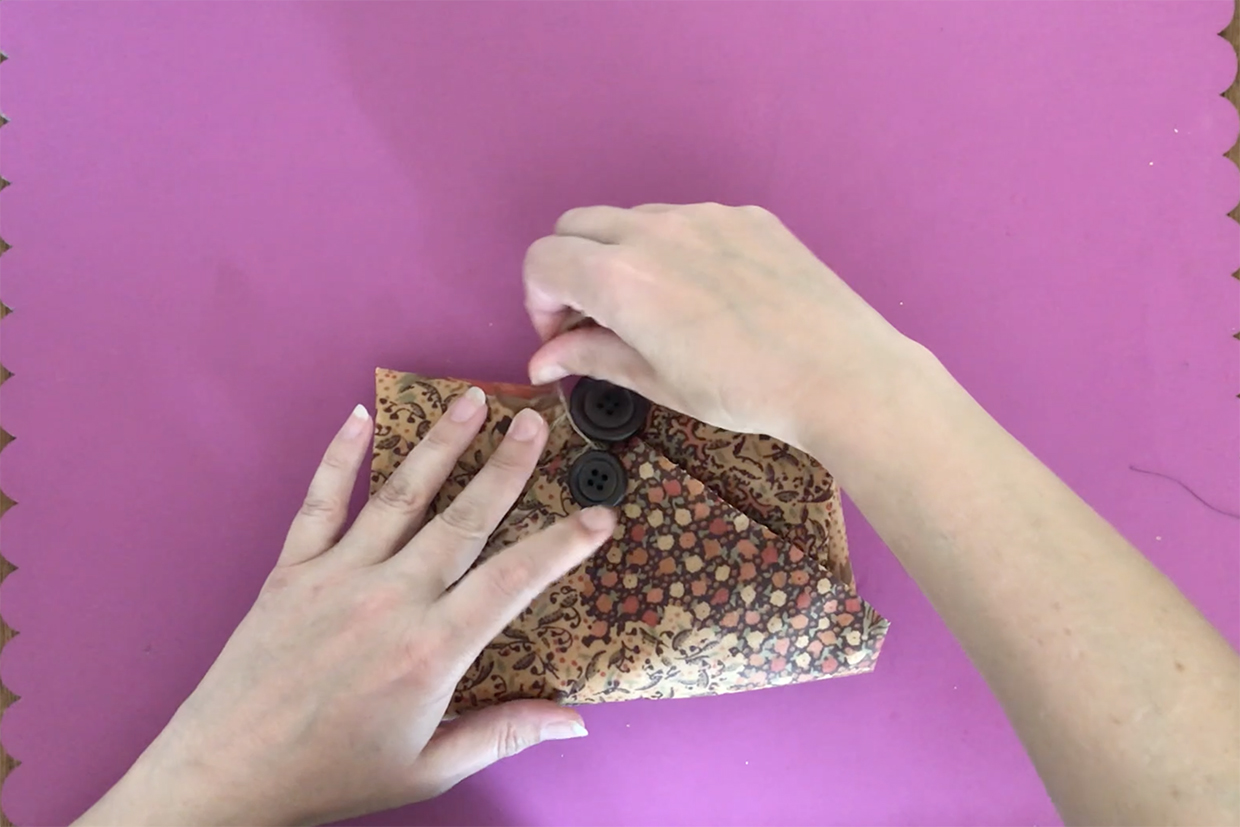Making your own beeswax food wraps: FAQ
Why use jojoba oil in beeswax wraps?
Adding jojoba oil to your beeswax wraps makes them more pliable, less stiff and easier to mould into different shapes. This is not straightforward with the iron method, so we have not included jojoba oil in our how to make beeswax wraps tutorial. Instead, if you find it hard to mould your beeswax wraps into different shapes, hold it in your hands to warm it and maker it a little more pliable.
How to use beeswax wraps
In our how to make beeswax wraps tutorial, we’ve made our beeswax wrap into a reusable food wrap to wrap sandwiches, but if you don’t add the buttons, they work like a combination of cling film and silver foil. Use them to cover bowls of leftovers in your fridge, moulding the fabric around the bowl opening so it takes on the right shape and clings on. They are great for keeping cut herbs fresh in the fridge as they slow down desication without stopping things from breathing – this makes them great for non-sweaty storage of cheese, too.
How to clean beeswax wraps
Don’t use any heat to clean your wraps as this could melt the beeswax and shorten their life. A simple rinse under the cold tap is enough to clean off most foods, or apply a little washing up liquid on a sponge rinsed in cold water to get off any oily residues.
White beeswax or yellow beeswax wraps?
We’d say it is better to prioritise the quality of the beeswax over the colour. You need cosmetic or food quality for this project as the beeswax will be regularly coming into contact with your food. If you are using a white background fabric, white beeswax will give you less discolouration than yellow, but both will change the colour of your fabric. This is actually a useful feature that lets you see when your fabric is properly infused with the wax.
Is there a vegan version of beeswax wraps?
The great thing about using beeswax is it brings some antimicrobial qualities. But if you are avoiding animal products entirely, you can substitute in soy wax. Make sure the soy wax you use is certified for food use.
What about using pine resin to make my reusable food wraps?
Like jojoba oil, you can’t add pine resin using this easy ironing method, so we’ve not used it in our wraps. Adding pine resin in with the beeswax helps makes them more sticky and clingy, so they will grip on to things more which makes them a closer match for clingfilm. To use this, you need to melt down the beeswax and the resin together at a much higher temperature than you’d need to melt beeswax alone. Typically this is done in a saucepan on the stove – but it will ruin your saucepan for all other things. If you are keen on tying this method, you can find a tutorial from Countryfile magazine click for the Countryfile beeswax wrap tutorial
How to make beeswax wraps materials
If you are struggling to get hot of the materials you need for our how to make beeswax wraps tutorial locally, here are some online options for you. But for maximum ecological benefit, we recommend you check out your high street scoop stores and natural beauty retailers first to save on postage packaging and emissions.
White beeswax pellets
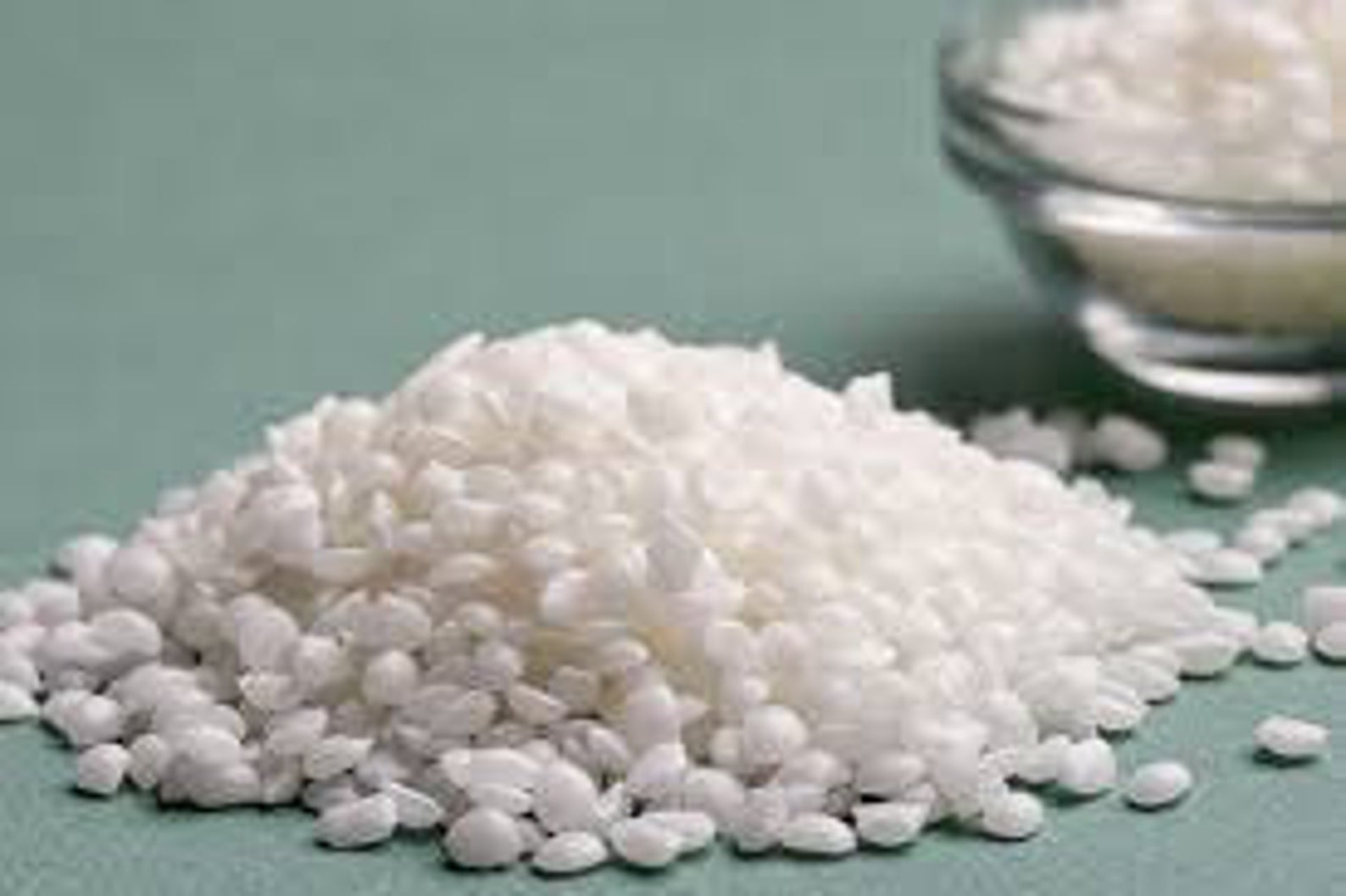
White beeswax is the colour to choose if you are using a light coloured fabric, as it won’t change the colour of the fabric as much as yellow beeswax pellets. But it is much harder to find white beeswax rather than yellow beeswax. Here is a great option to use with out how to make beeswax wraps tutorial if you have lighter fabrics. You can choose different quantities, starting at 1.7 fl oz, which should be enough to craft one large or two small beeswax food wraps.
Find on the AuthenticOilCo Etsy store
Beeswax wrap refresher
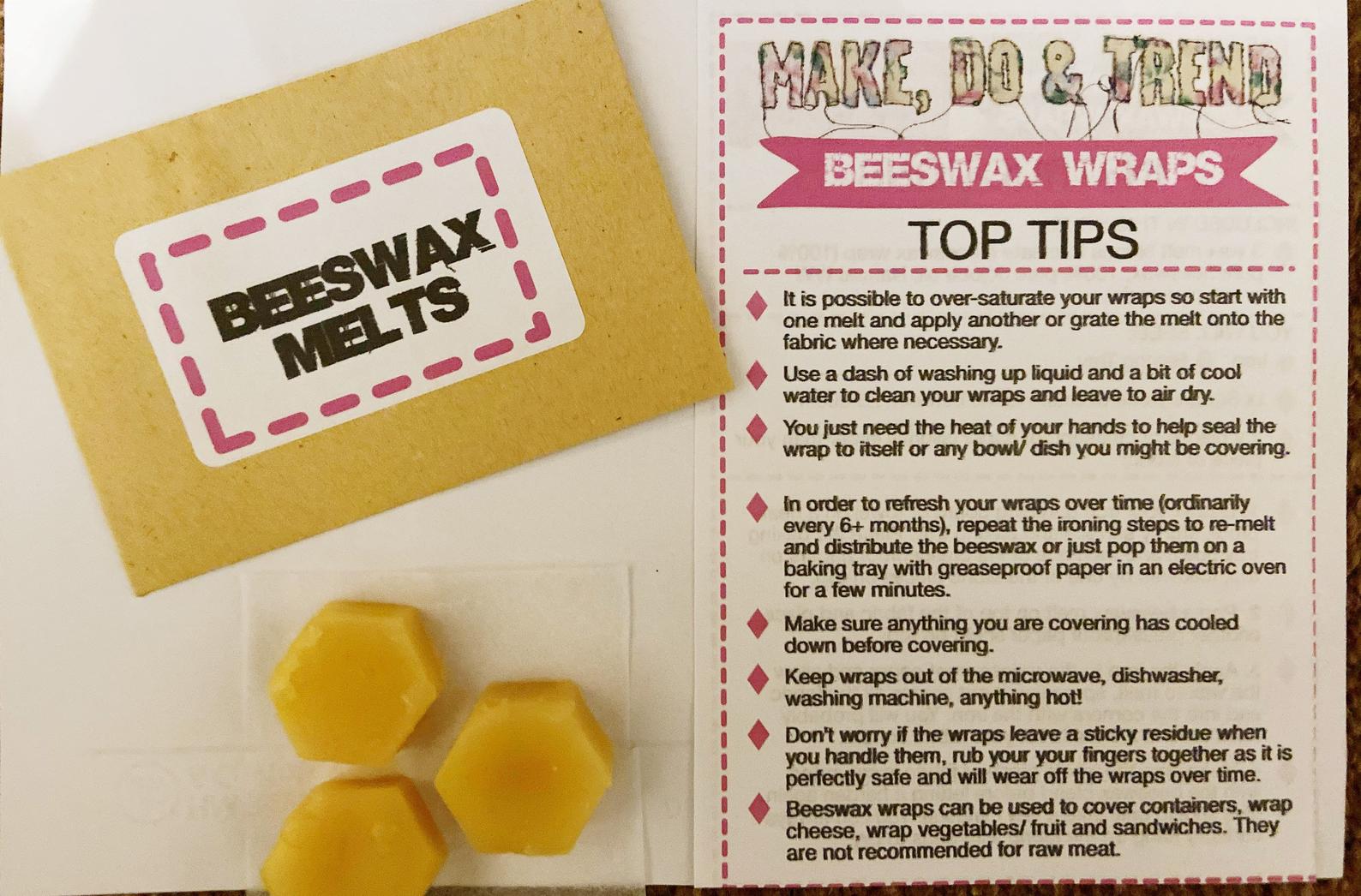
Here’s a handy little hack to use in our how to make beeswax wraps tutorial if you want to include jojoba and resin in your wraps. If you buy beeswax wrap refreshers, you can buy blocks of wax that have already been combined with jojoba and resin and then allowed to solidify again. So you can then grate the blocks and add to fabric with an iron, exactly as described in our how to make beeswax wraps tutorial, but with the added stickiness and pliability you get from having these two substances in the mix.
Find on the MakeDoandTrendUK Etsy store
More like the how to make beeswax wraps tutorial
If you have enjoyed our how to make beeswax wraps tutorial, try one of our other great natural beauty or plastic reducing projects! Learn how to make soap at home or how to make wax melts to fill your home with t e natural aroma of essential oils. Essential oils are a key ingredient in our how to make bath bombs projects well. Try our how to make reusable cotton pads project in easy beginner crochet, or upcycle old clothes and fabric scraps in our with our t-shirt yarn patterns article and our how to make a rag rug with hessian tutorial.

